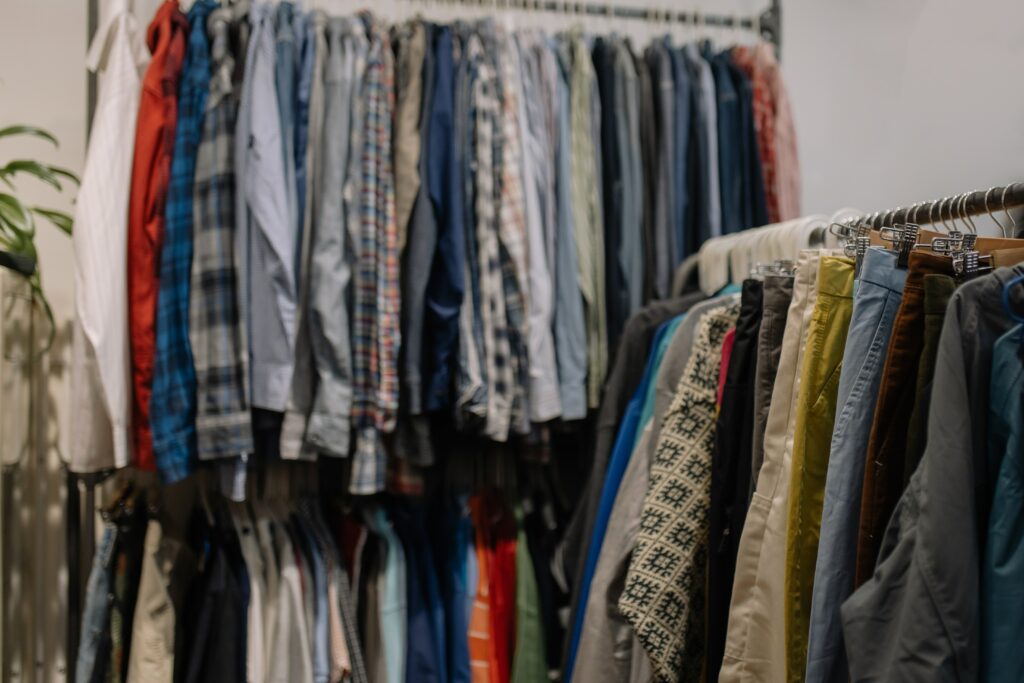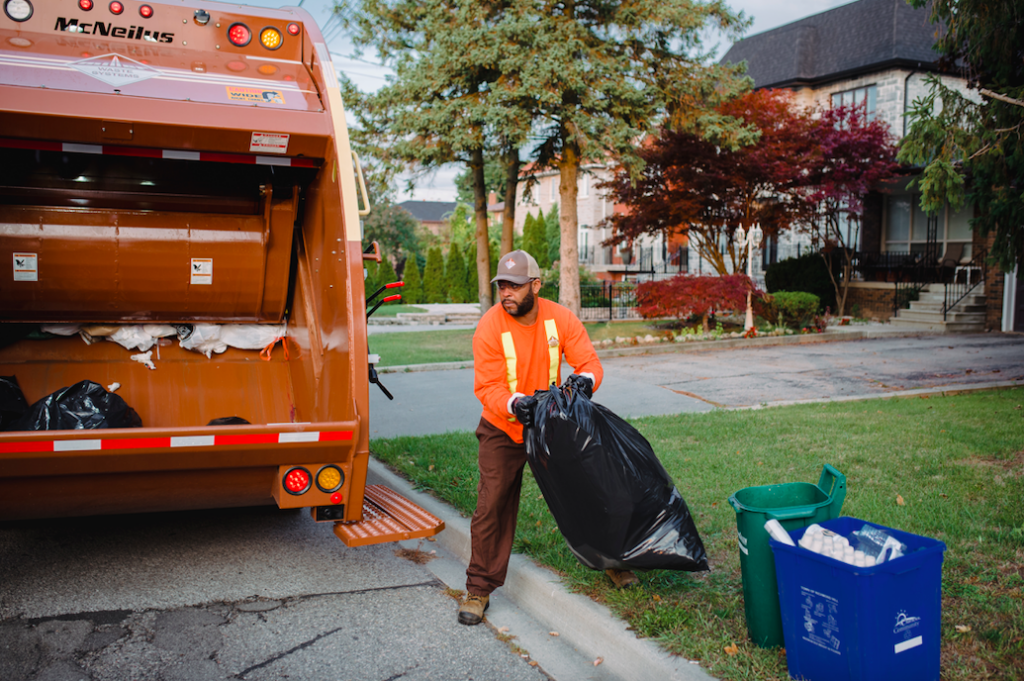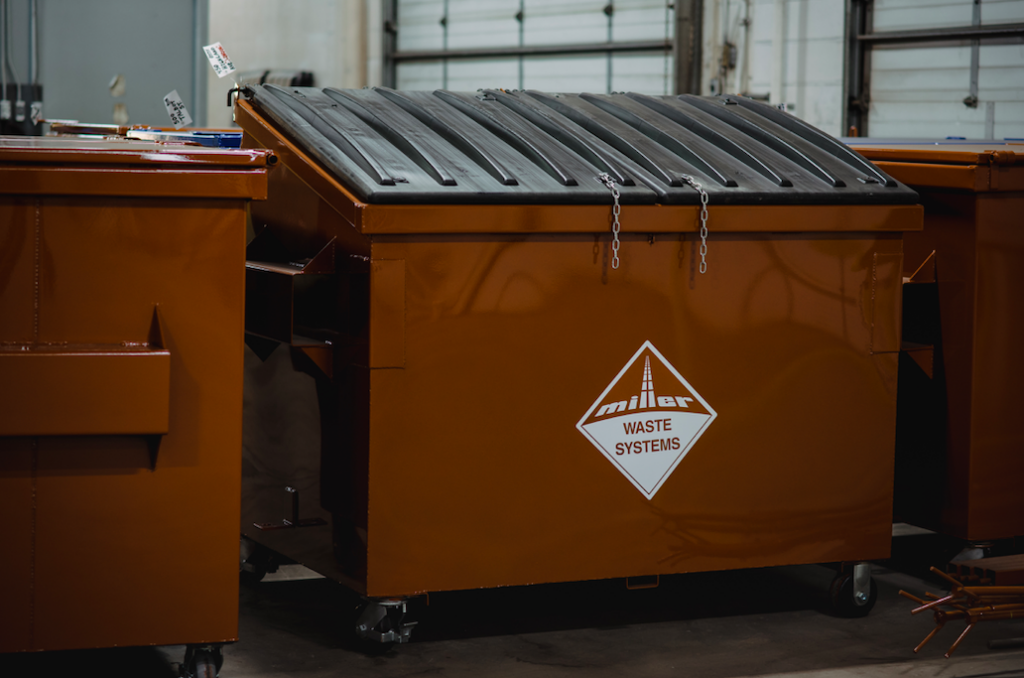The constant change in fashion trends and availability of fast fashion at ever plummeting price points can tempt us to buy excessive amounts of clothes. However, this behaviour has led to an overflow of garments in our landfills. These clothes, often made with non-biodegradable, synthetic fibres, contribute to the emission of harmful greenhouse gases. Check out this infographic on how textile waste continues to grow and affect our landfills.
Canada alone sends 10 million tonnes of clothing to the landfill every year, 95% which could be recycled or reused. To protect our environment and address the issue of clothing waste, we must adopt a more thoughtful and strategic approach. At Miller Waste, our core values are resource recovery and the preservation of the environment. With that in mind, here are a few ways to help minimize clothing waste by reducing your consumption of new items, and recycling and re-purposing what you already own.

1. Donate Your Clothes
Donating your gently used clothes allows someone else to benefit from them and remains a great way to minimize clothing waste. What may seem insignificant to you, such as an old pair of jeans, could be exactly what someone else is looking for. Many municipalities in Canada partner with licensed, registered charities, including The Salvation Army, Diabetes Canada, and the Kidney Foundation to give gently used textiles a new home. You can drop your textile donations off at a specially marked bin at community centres and town halls or bring them to your community recycling depot. If you’re pressed for time, you can often contact the charity or foundation and have them pick up your donation directly from your home.
2. Thrift
To further minimize clothing waste, consider thrifting your clothes. Thrifting offers an excellent opportunity to reduce the consumption of new clothing and discover unique, gently used pieces that suit your preferences and budget. As you gear up for exciting summer adventures like camping and hiking, visit your nearby thrift store instead of purchasing brand-new attire. Purchasing pre-loved items also reduces the need for exploitative production methods. The World Bank estimates that textile dyeing, and treatment contributes up to 20 per cent of total industrial water pollution.1
Lastly, you’re probably more likely to find discontinued brands and one-of-a-kind pieces you’d be hard-pressed to track down in any mall or superstore!

3. Repair or Repurpose Old Clothes
Before parting ways with your beloved pair of jeans sporting a small knee hole, consider a simple solution: purchase an iron patch and cover the hole with a cool new design. Likewise, if you find yourself with a shirt accidentally caught on your cupboard, try transforming it into a handy household rag. Consider whether other garments can be repurposed as headbands, handbags, quilts, pillow covers, or blankets. Watch a YouTube tutorial or consult TikTok for inspiration and tutorials.
Repairing and repurposing old clothes offer countless opportunities to minimize clothing waste and take a more creative avenue to reducing your environmental impact.
4. Take Care of Your Garments
Get the most wear possible out of your clothes so you won’t need to replace them as often. Reduce the number of times you wash them to avoid wear and tear, and use the cold, gentle cycle if they are only lightly soiled to preserve the fibres and structure. Air dry them whenever possible to protect against any adverse effects of the dryer and try to limit ironing. It’s a convenient bonus that each of these tips also converse energy and help you save money!
5. Rent or Borrow
If a wedding, bridal shower, graduation, or other special event is on the agenda, consider borrowing an outfit from a friend or family member to avoid purchasing new items that may not get a lot of additional wear. A Google search can also give you a list of clothing rental organizations in your area that can offer a greater selection of pieces at a much lower financial and environmental cost than buying new.
6. Sell Your Gently Used Clothes
Opting to sell your gently used clothes is an excellent way to recycle and give these garments a new lease on life. Consider exploring local stores where you can bring your clothes and receive monetary compensation. You can also connect with potential buyers in your area via resales websites like eBay, Facebook Marketplace, Kijiji, and Poshmark. Not only does selling your used clothes extend the lifespan of your items, divert waste from the landfill, and help you earn extra cash, it also benefits people who may not be able to afford to purchased their clothing new.
If you have tried your hardest and still have some clothes that cannot be reused or recycled, you should dispose of them correctly. Some municipalities have designed textile collection days, usually in the summer, where residents can bring their textile waste to the curb for pick up. You can also drop them off at your community recycling depot. Click here to see if Miller Waste operates a location near you.


